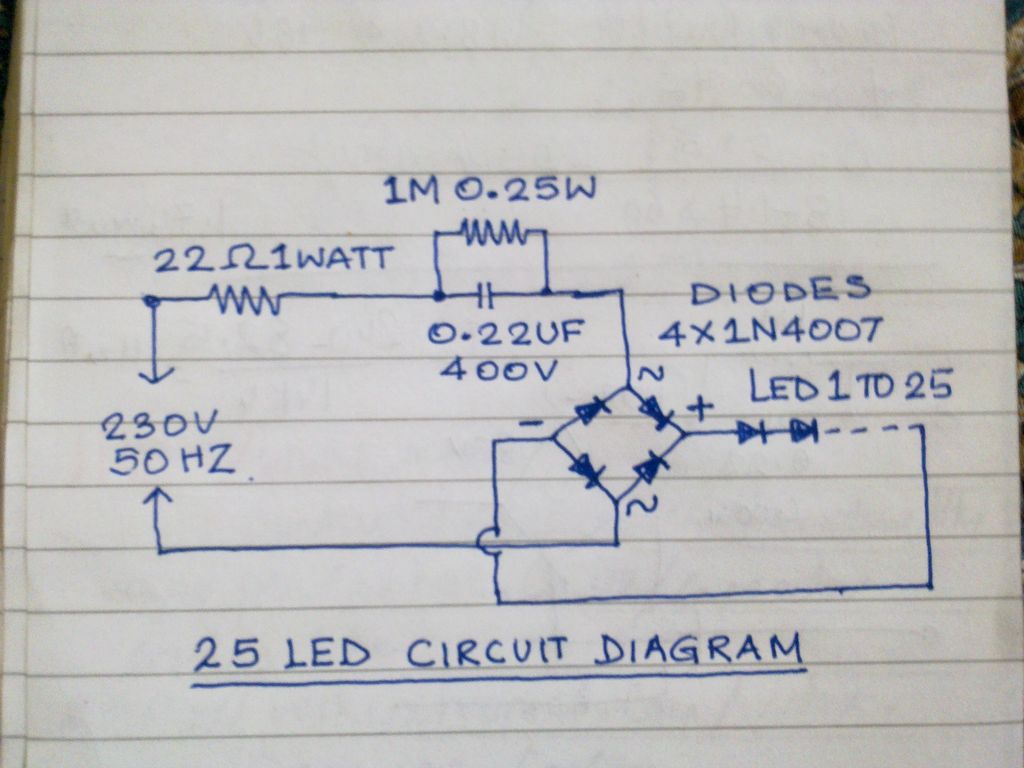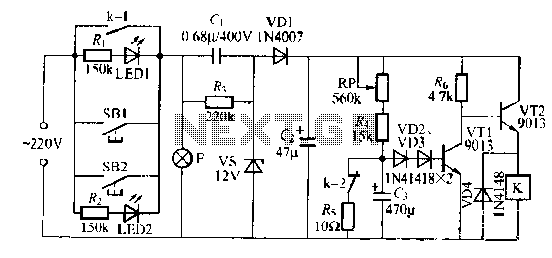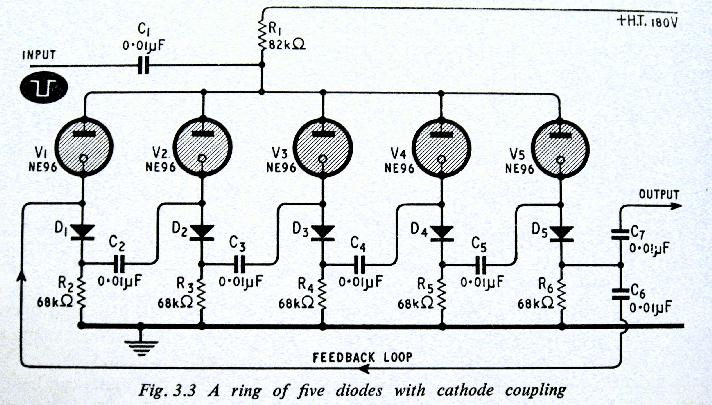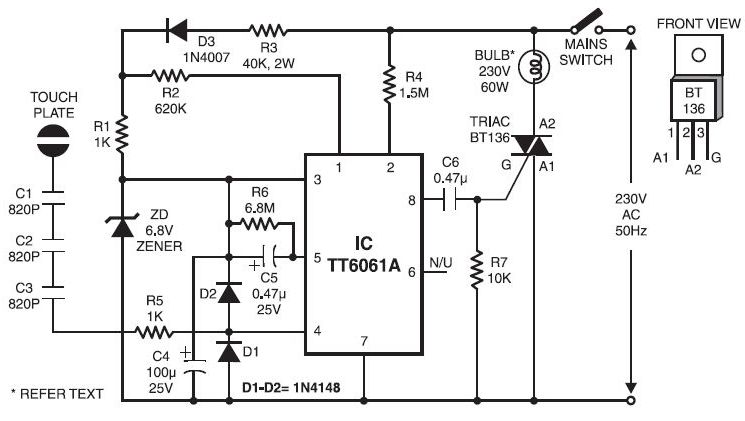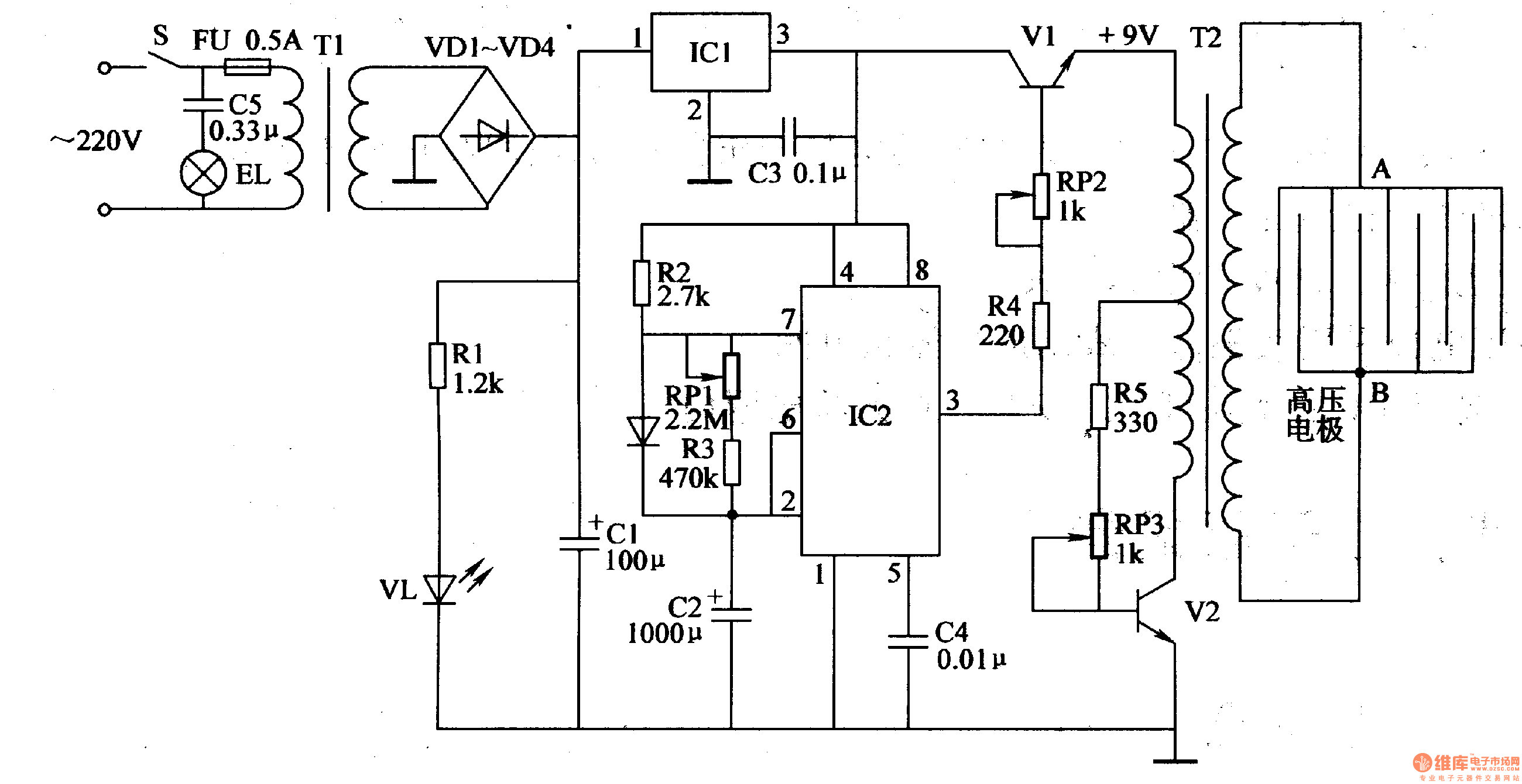
Lamp Dimmers

This design is likely to generate significant radio frequency interference (RFI) without the incorporation of a choke. The house wiring serves to limit the rate of change of current (di/dt). It is a cost-effective design that demonstrates hysteresis at lower brightness settings. Not all products available to consumers are of high quality.
The circuit described is indicative of a basic electronic design that lacks certain filtering components, notably a choke, which is essential for reducing electromagnetic interference. The absence of a choke can lead to substantial RFI, which may affect nearby electronic devices and communication systems. The design's reliance on house wiring to limit di/dt suggests that it is intended to operate within typical residential electrical parameters, utilizing the inherent inductance of the wiring to mitigate rapid changes in current.
The mention of hysteresis at dim settings indicates that the circuit may employ a feedback mechanism that stabilizes the output brightness against fluctuations in input voltage or load conditions. This hysteresis can be beneficial in preventing flickering or instability at lower brightness levels but may also introduce undesirable effects if the feedback is not properly designed.
Furthermore, the statement about the quality of consumer products implies that this design may be a low-cost solution that sacrifices performance for affordability. Such designs may be prevalent in low-end consumer electronics where cost constraints take precedence over performance optimization. The implications of this can lead to a user experience that is less than satisfactory, particularly in environments sensitive to RFI.
In summary, the circuit's design, while economical, may not meet the expectations of users looking for high-quality performance, especially in applications where RFI is a concern. Proper circuit design would typically include additional components such as chokes, capacitors, and possibly shielding to enhance performance and reduce interference.This must generate an awfull lot of RFI without a choke! The house wiring supplies the di/dt limiting. This is a CHEAP design which exhibits hysterisys at dim settings. Not everything made and sold to the public is top notch. 🔗 External reference
The circuit described is indicative of a basic electronic design that lacks certain filtering components, notably a choke, which is essential for reducing electromagnetic interference. The absence of a choke can lead to substantial RFI, which may affect nearby electronic devices and communication systems. The design's reliance on house wiring to limit di/dt suggests that it is intended to operate within typical residential electrical parameters, utilizing the inherent inductance of the wiring to mitigate rapid changes in current.
The mention of hysteresis at dim settings indicates that the circuit may employ a feedback mechanism that stabilizes the output brightness against fluctuations in input voltage or load conditions. This hysteresis can be beneficial in preventing flickering or instability at lower brightness levels but may also introduce undesirable effects if the feedback is not properly designed.
Furthermore, the statement about the quality of consumer products implies that this design may be a low-cost solution that sacrifices performance for affordability. Such designs may be prevalent in low-end consumer electronics where cost constraints take precedence over performance optimization. The implications of this can lead to a user experience that is less than satisfactory, particularly in environments sensitive to RFI.
In summary, the circuit's design, while economical, may not meet the expectations of users looking for high-quality performance, especially in applications where RFI is a concern. Proper circuit design would typically include additional components such as chokes, capacitors, and possibly shielding to enhance performance and reduce interference.This must generate an awfull lot of RFI without a choke! The house wiring supplies the di/dt limiting. This is a CHEAP design which exhibits hysterisys at dim settings. Not everything made and sold to the public is top notch. 🔗 External reference
